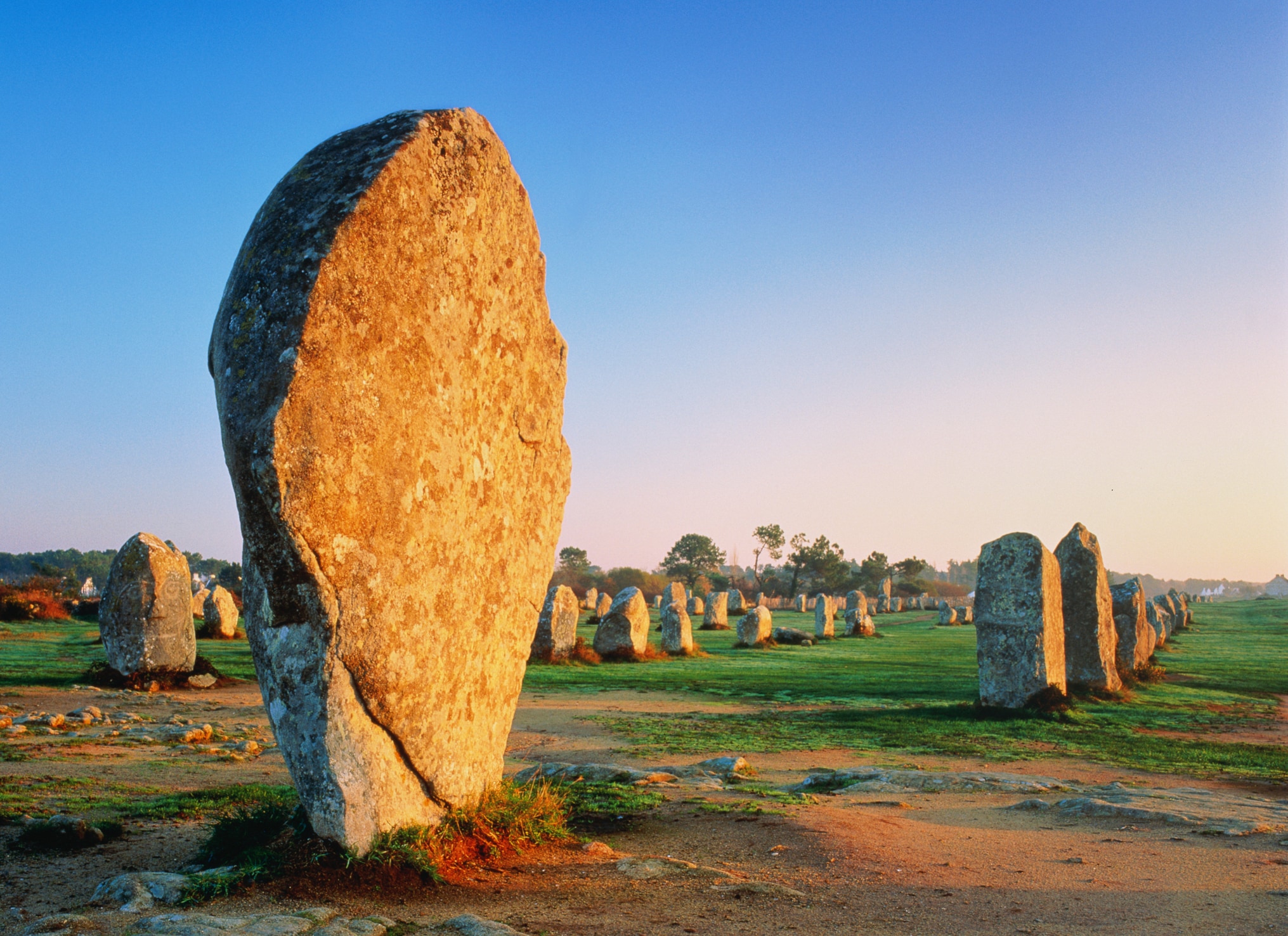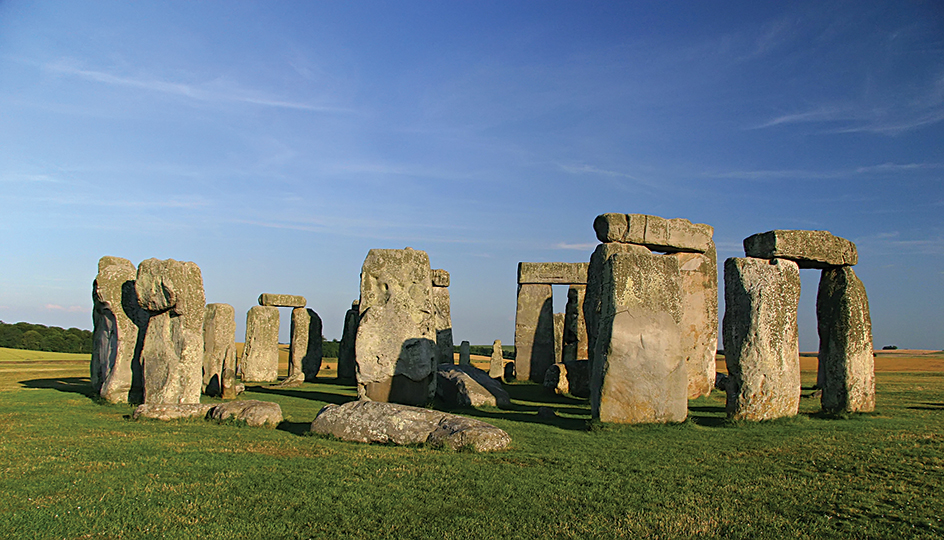Megalithic, << `mehg` uh LIHTH ihk, >> monuments are structures made of large stones by prehistoric people. The builders made them for religious purposes or as burial places. The word megalith means large stone. Megalithic monuments can be found in many parts of the world. The best-known monuments are in western Europe and the Mediterranean region. These sites were built between about 4500 and 1400 B.C., during the Neolithic period and early Bronze Age.

Archaeologists describe several types of megalithic monuments. Chamber tombs, also called dolmens, range from a small, single chamber to several small chambers leading off a central hallway, called a passage grave. Menhirs are single erect stones. A circle of menhirs surrounded by a bank of earth and a ditch is called a henge. The most famous henge, Stonehenge , stands near Salisbury, England. Menhirs were also arranged in parallel rows called alignments. Elaborate alignments near Carnac in northwestern France extend over 2 miles (3 kilometers).


